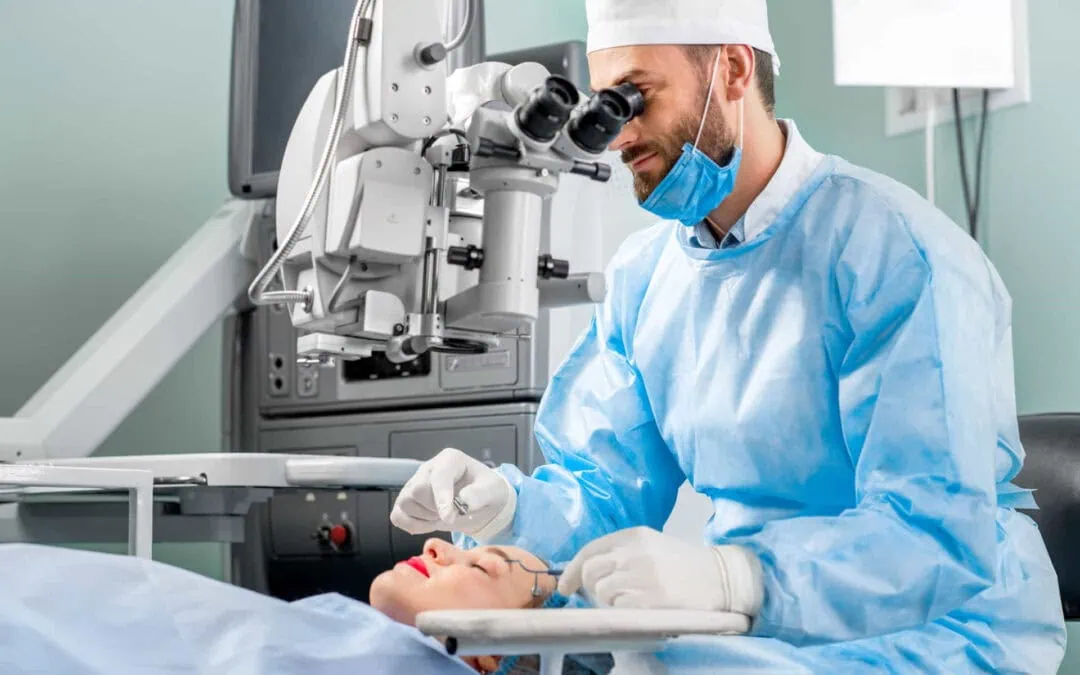Millions of people reach a point where they’re done fumbling with glasses or tired of contact lenses drying out by noon. Lasik eye surgery often enters the picture as a long-term option. Timing, though, isn’t just about convenience—it’s a key factor in success. Choosing when to get Lasik eye surgery involves more than finding a spot on the calendar.
Knowing the Right Time for Lasik Eye Surgery
One patient waited until after college when his prescription stopped changing. Another opted for it before starting a new job where vision requirements were strict. Both had different timelines, yet each followed medically sound timing. Experience with Lasik eye surgery shows the best results often come when timing aligns with stability and health, not just desire.
- The FDA recommends patients be at least 18 years old for Lasik, though 20-40 is often ideal (FDA.gov).
- The American Refractive Surgery Council notes 96% of patients achieve 20/20 or better following Lasik.
- Vision must remain stable for at least 12 months before being considered a good candidate (Mayo Clinic).
Age Guidelines for Lasik Candidates
Age matters because the eyes go through changes that can impact the long-term outcome of Lasik. Around age 18, the eye’s development slows, but waiting until the mid-20s helps ensure prescriptions won’t keep shifting. Many surgeons suggest waiting until vision has been stable for a full year. Teenagers or young adults still experiencing changes in prescription may not see lasting results.
- Most candidates are between 25 and 40, when vision stability is more likely.
- Presbyopia typically starts around age 40, changing eligibility for certain types of Lasik.
- The FDA restricts Lasik for individuals under 18, even with parental consent.
Stable Vision Before Lasik Surgery
A consistent prescription is critical before moving forward with surgery. Changes in your vision mean the shape of your cornea may still be adjusting—Lasik locks in the current corneal shape. Someone whose eyeglass strength shifts year to year may need to hold off until things settle. A rushed decision here can result in undercorrection or regression.
- Vision should remain unchanged for at least 12 months.
- Surgeons often require two matching prescriptions a year apart.
- Even a 0.50 diopter change in refraction can delay candidacy.
Lasik Eye Surgery After Pregnancy
Hormonal fluctuations during pregnancy affect more than mood—they influence vision, too. Fluid retention and changes in corneal thickness can temporarily alter how the eyes focus. Many eye surgeons suggest waiting at least three to six months after childbirth. If breastfeeding, they may recommend delaying even longer to allow hormones to normalize fully.
- Estrogen shifts can change the curvature of the cornea.
- Temporary dry eye symptoms often worsen during pregnancy.
- Vision typically stabilizes several months postpartum.
Medical Conditions That Can Delay Lasik
Chronic health issues can interfere with how the eyes heal after surgery. Conditions like diabetes or autoimmune diseases may increase the risk of complications or slow recovery. Lasik isn’t off the table for everyone with medical conditions, but it does require a cautious, case-by-case approach. Certain eye infections, recent trauma, or medications may cause surgeons to postpone.
- Rheumatoid arthritis and lupus can impact healing.
- Steroid medications may interfere with corneal regeneration.
- Uncontrolled diabetes can lead to unpredictable visual outcomes.

When Lasik Should Be Delayed
Some life events make the timing less than ideal. Starting a physically demanding job? Planning a vacation next week? Lasik might need to wait. The eyes need time to recover without disruption, and recovery isn’t just about the day after surgery—it’s about the entire healing arc. A clear schedule helps prevent setbacks.
- Avoid Lasik during periods of high physical stress or intense travel.
- Athletes or military personnel may require extended downtime.
- Surgery during major life transitions can complicate healing routines.
Choosing the Right Season for Recovery
While Lasik can technically be done any time of year, some seasons make recovery easier. Spring and fall often offer milder temperatures and fewer allergens, while winter’s dry air may worsen eye irritation. Some people prefer scheduling around holidays or time off to allow quiet recovery days at home. Comfort plays a bigger role than most expect.
- Avoid dry seasons if prone to dry eye symptoms.
- Allergy season may interfere with healing due to increased eye rubbing.
- Cooler months offer reduced sun exposure post-surgery.
Lasik Evaluation and Scheduling Timeline
Getting Lasik doesn’t happen overnight—there’s a process that includes thorough evaluation and planning. A refractive surgeon will conduct scans to map your cornea, check your prescription history, and discuss your health profile. From the initial consultation to surgery day, the typical timeline spans several weeks. During this period, expectations and eligibility are fine-tuned.
- Corneal topography helps rule out keratoconus.
- Tear film analysis is used to screen for dry eye risks.
- Contact lenses must be removed days to weeks prior to testing.
Post-Surgery Healing and Vision Recovery
The day after Lasik, most patients notice a significant improvement—but it’s not the final result. Vision can continue to sharpen over the next few weeks. Redness, dryness, and sensitivity to light are common during this period, which is why following post-op care instructions matters. Rushing back into regular routines too soon can set things back.
- Vision typically stabilizes within 1 to 3 months.
- Driving is usually allowed after a follow-up confirms safe vision levels.
- Eye rubbing and water exposure must be avoided during early recovery.
Balancing Life and Lasik Timing
Planning Lasik around career changes, big events, or insurance timelines helps ensure a smoother experience. People often wait for flexible job schedules or healthcare funding to align before scheduling. A patient-centered approach looks at timing from more than a medical lens—it includes lifestyle, goals, and daily habits. That’s why the answer to when is never the same for everyone.
- Some insurance plans offer FSAs or HSAs to cover Lasik.
- Teachers and students often plan surgeries during school breaks.
- Stressful periods can interfere with optimal healing.

Key Takeaways: When to Get Lasik Eye Surgery
Choosing the right moment for Lasik eye surgery goes beyond eye charts and prescriptions. Stability in vision, age, overall health, and life circumstances all come into play. Surgery success rates are high when these factors align, with most patients enjoying sharper sight for years. Planning carefully and understanding personal readiness are part of what makes Lasik a reliable option for vision correction.
- Wait until vision has stayed the same for 12 months or more.
- Age, pregnancy, health conditions, and lifestyle changes affect eligibility.
- Optimal results come from balancing timing with proper medical evaluation.
FAQs on Timing for Lasik Eye Surgery
How long should I wait after pregnancy to get Lasik?
Most eye surgeons recommend waiting at least three to six months after childbirth and weaning, depending on how quickly hormone levels stabilize.
Is 45 too old to get Lasik?
Not necessarily. While age can affect eligibility, many people in their 40s and 50s still qualify, especially with customized procedures suited to aging eyes.
Can seasonal allergies impact Lasik recovery?
Yes. Allergies can cause eye rubbing and inflammation, which may delay healing. Scheduling outside allergy season is often safer for sensitive individuals.
Does diabetes automatically disqualify someone from Lasik?
No. Well-controlled diabetes may still allow for Lasik, but the surgeon must evaluate how the condition affects eye health and healing response.
How soon after the consultation can surgery be done?
If all tests are favorable, surgery can often be scheduled within two to four weeks of the initial consultation, depending on clinic availability and personal scheduling.

